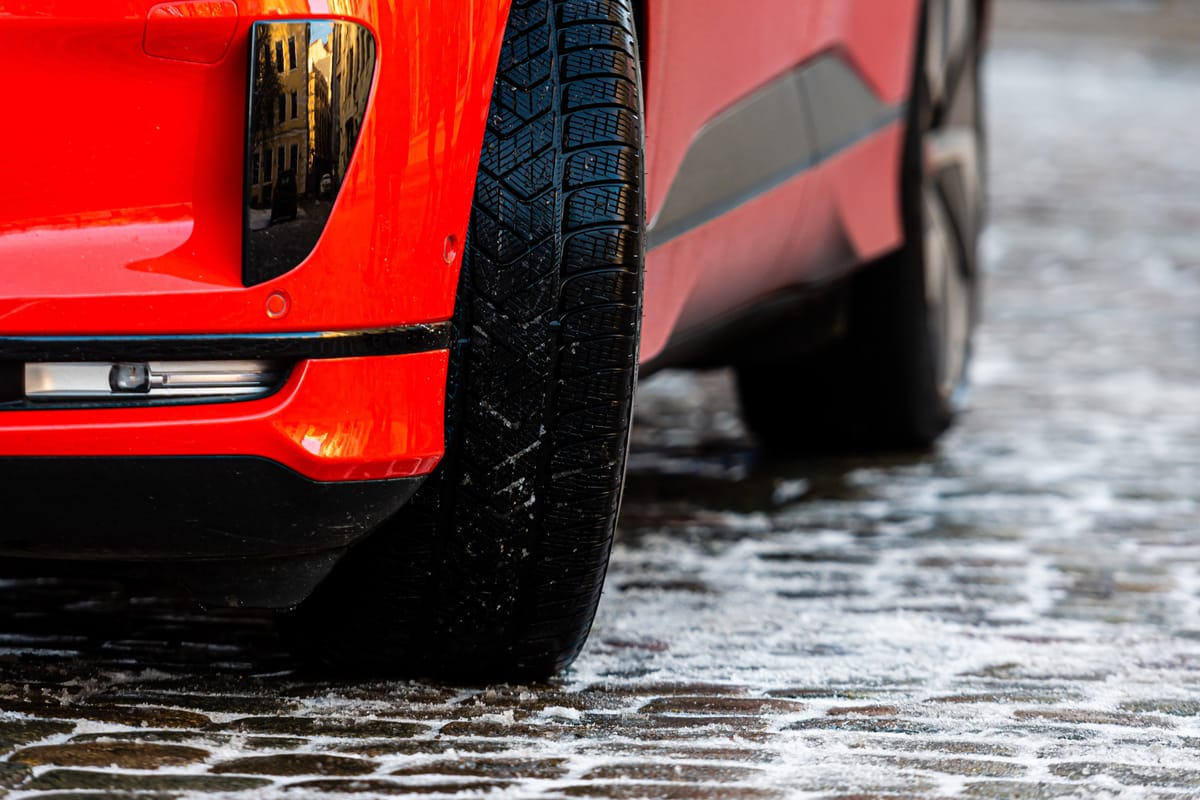What Is Traction Control and How Does It Work?

When I was learning to drive a car back in 2007 (unprofessionally and dangerously) on rough roads in Burnt Forest, whenever it rained, I’d stop for fear of sliding. Of course, that 2002 Suzuki Jimny didn’t have something we call traction control as a standard or optional feature. And yeah, I didn’t even know there was something like that.
You know what I’m talking about, right? After a heavy downpour, sometimes driving is a struggle, and that’s where traction control comes in.
Most modern cars, if you’ve noticed, come with a little dashboard light, usually a car icon with squiggly lines under it. It blinks when you’re accelerating on slippery ground. But what exactly is traction control, and why should you care?
Here’s a Peach Cars insight.
What Is Traction Control?
Traction control is a safety feature built into most modern cars. Its job? To stop your wheels from spinning too much when you accelerate. It keeps things from getting too wild.
When your tyres start slipping on wet tarmac, gravel, or loose soil, traction control steps in and says: “Relax, boss, let me handle this.”
In technical terms: traction control uses sensors from your car’s anti-lock braking system (ABS) to monitor wheel speed. If one wheel starts spinning faster than the others, the system automatically reduces engine power or applies brake force to that wheel. The result? More grip, less drama.
Why Is It Important in Kenya?
Kenyan roads are full of surprises. You can move from smooth tarmac to loose gravel in two seconds. Add rain, potholes, and impatient matatus, and you have a recipe for skids.
Here’s where traction control helps:
- Wet Roads: Rain + oil spills = Nairobi skating rink. Traction control keeps you planted.
- Loose Surfaces: On murram roads upcountry or in construction zones, it prevents unnecessary wheelspin.
- Emergency Situations: When you accelerate hard to overtake a matatu blocking two lanes, it stabilises your car.
Without traction control, chances of slipping or sliding off the road are high.
How Does Traction Control Work?
Let’s simplify:
- Wheel Speed Sensors: Each wheel has a sensor measuring how fast it’s turning.
- The Brain (ECU): Your car’s computer compares all four wheels.
- Detecting Slip: If one wheel is spinning faster than the rest, the system knows traction is lost.
- Corrective Action:
- Cuts engine power slightly, OR
- Brakes the spinning wheel until grip is restored.
This all happens in milliseconds, faster than you can say “Aki hizi Nairobi roads.”
When Does the Traction Control Light Come On?
You’ll usually see the light blink on your dashboard when:
- Driving on wet, muddy, or sandy roads.
- Accelerating too aggressively.
- Climbing a slippery hill.
If it stays on permanently, that could mean a fault in the system. That’s when you visit a mechanic.
Can You Turn It Off?
Yes, most cars let you switch traction control off with a button. But why would you?
Here are the only times switching it off makes sense:
- Getting Unstuck: In deep mud or snow (for our Limuru and Mt. Kenya drivers), sometimes you need controlled wheelspin to free the car.
- Performance Driving: On a racetrack (not Thika Superhighway at 2 am, tafadhali).
For daily Nairobi hustling? Leave it ON. Always.
Traction Control vs. ABS vs. Stability Control
People often confuse these. Quick breakdown:
- Traction Control (TCS): Prevents wheelspin when accelerating.
- ABS (Anti-lock Braking System): Stops wheels from locking up when braking.
- Electronic Stability Control (ESC): Helps keep the whole car stable if it starts to skid sideways.
Together, they’re like a trio of watchmen guarding your safety, one at the gate, one at the door, and one following you inside.
Do All Cars in Kenya Have Traction Control?
Not all. Traction control became standard in many modern vehicles from the late 2000s onwards. But some older or budget models may not have it.
That’s why, when buying a used car, it’s smart to check whether the model you’re eyeing has traction control. At Peach Cars, every vehicle goes through a 288-point inspection. That means you’ll know exactly which safety features (including traction control) are working properly before you hit the road.
If you’re not sure which car best suits your needs, you can always give Peach Cars a call, it’s the easiest way to find a safe, reliable ride without guesswork.
Why You Should Care (Even If You’re a “Pro” Driver)
Some drivers think traction control is unnecessary because “Mimi ni driver experienced, siwezi skid.” That’s pride talking.
Truth is, even the best driver can’t match a computer reacting in milliseconds. Traction control gives you:
- More control in bad weather
- Less tyre wear (since you’re not spinning them pointlessly)
- Better safety for passengers (hello, five-star Uber ratings)
Think of it as a seatbelt for your tyres, you hope you don’t need it, but when you do, it saves you.
Peach It, Grip the Road, Own the Hustle
Traction control is not about making you drive faster, it’s about keeping you steady when roads try to embarrass you. It’s a quiet hero, working behind the scenes to make sure your hustle keeps moving without drama.
And when it’s time to upgrade or buy a car, remember, a good deal is not just about price. It’s about safety, reliability, and peace of mind. That’s where Peach Cars comes in: trusted inspections, certified cars, and a team that understands Kenyan roads as much as you do.
👉🏾 Check out Peach Cars today, call us at +254709726900 or browse this wide selection of quality used cars and find one that works just as hard as you do.
Because in Nairobi, grip isn’t just about tyres, it’s about surviving the hustle.




